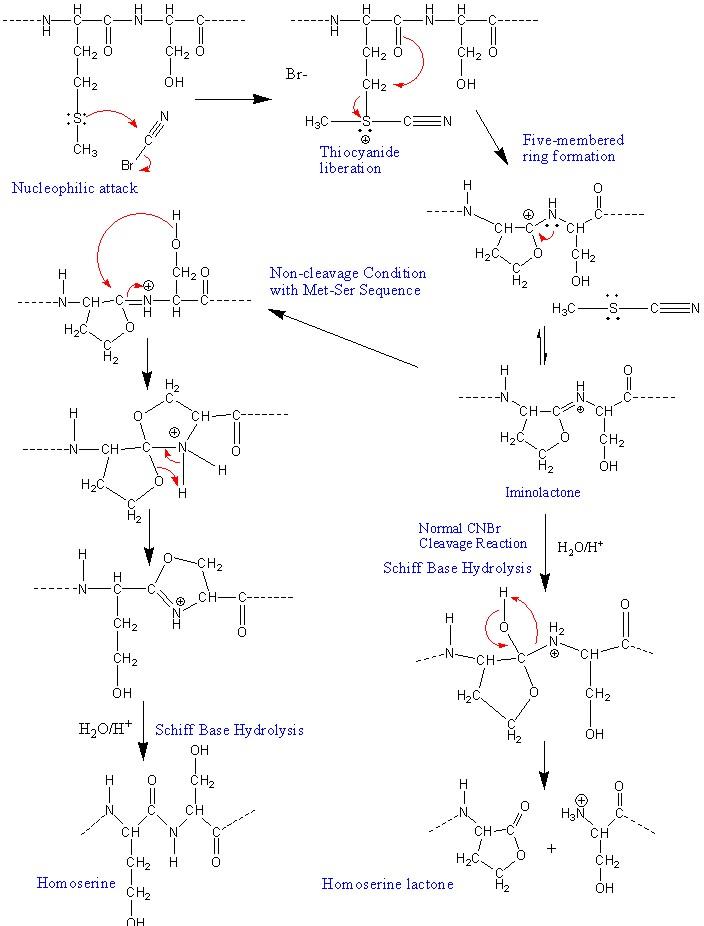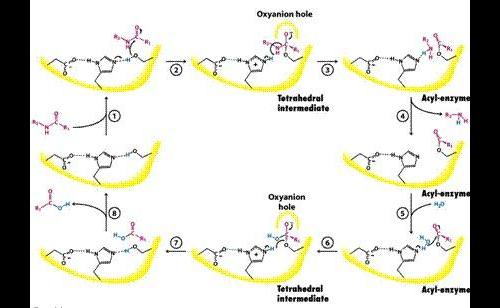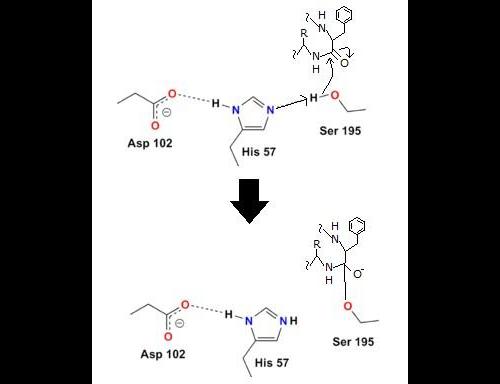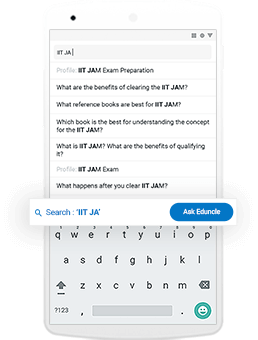Time management is very much important in IIT JAM. The eduncle test series for IIT JAM Mathematical Statistics helped me a lot in this portion. I am very thankful to the test series I bought from eduncle.
Nilanjan Bhowmick AIR 3, CSIR NET (Earth Science)Mohanchaitanya Reddy posted an Question
- IIT JAM
- Biotechnology (BT)
Enzymatic cleavage: the proteolytic enzymes such as trypsin, chymotrypsin, pepsin and elastase exhibit specificity in cleaving the peptide bonds (refer fig.8.7)
Enzymatic cleavage: trypsin is most commonly used. It hydrolyses the peptide bonds containing lysine or arginine on the carbonyl (-C=0) side of peptide linkage. Chemical cleavage: Cyanogen bromide (CNBr) is commonly used to split polypeptides into smaller fragments. CNBr specifically splits peptide bonds, the carbonyl side of which is contributed by the amino acid methionine. please explain diagrammatically
- 0 Likes
- 2 Comments
- 0 Shares
-
Abhijeet Gaurav Best Answer
Cyanogen bromide hydrolyzes peptide bonds at the C-terminus of methionine residues. This reaction is used to reduce the size of polypeptide segments for identification and sequencing. The electron density in cyanogen bromide is shifted away from the carbon atom, making it unusually electrophilic, and towards the more electronegative bromine and nitrogen. This leaves the carbon particularly vulnerable to attack by a nucleophile, and the cleavage reaction begins with a nucleophilic acyl substitution reaction in which bromine is ultimately replaced by the sulfur in methionine. This attack is followed by the formation of a five-membered ring as opposed to a six-membered ring, which would entail the formation of a double bond in the ring between nitrogen and carbon. This double bond would result in a rigid ring conformation, thereby destabilizing the molecule. Thus, the five-membered ring is formed so that the double bond is outside the ring. For Trypsin which is a Serine Proteases : - The enzymatic mechanism is similar to that of other serine proteases. These enzymes contain a catalytic triad consisting of histidine-57, aspartate-102, and serine-195.This catalytic triad was formerly called a charge relay system, implying the abstraction of protons from serine to histidine and from histidine to aspartate. the nucleophilicity of the active site serine is increased, facilitating its attack on the amide carbon during proteolysis. The negative aspartate residue (Asp 189) located in the catalytic pocket (S1) of trypsin is responsible for attracting and stabilizing positively charged lysine and/or arginine, and is, thus, responsible for the specificity of the enzyme. This means that trypsin predominantly cleaves proteins at the carboxyl side (or "C-terminal side") of the amino acids lysine and arginine except when either is bound to a C-terminal proline,although large-scale mass spectrometry data suggest cleavage occurs even with proline. Trypsin is considered an endopeptidase, or, the cleavage occurs within the polypeptide chain rather than at the terminal amino acids located at the ends of polypeptides.
![cropped1885854348966101452.jpg]()
![cropped7094635034902293809.jpg]()
![cropped7472575837758269523.jpg]()
![eduncle-logo-app]()
but it was mentioned that trypsin will hydrolyze at aspergine on carbonyl side of petide bond
![eduncle-logo-app]()
In Trypsin, the residue corresponding to chymotrypsin Ser 189, which lies at the bottom of the binding pocket, is the anionic residue Asp. The cationic side chain of trypsin's preferred residues, Arg & Lys, can therefore form ion pair with this Asp residue. The rest of chymotrypsin's specificity pocket is preserved in Trypsin so that it can accommodate the bulky side chains of Arg & Lys.
![eduncle-logo-app]()
Serine Proteases have a similar kind of mechanism of action & Trypsin is one of them along with Chymotrypsin & Elastases.
Do You Want Better RANK in Your Exam?
Start Your Preparations with Eduncle’s FREE Study Material
- Updated Syllabus, Paper Pattern & Full Exam Details
- Sample Theory of Most Important Topic
- Model Test Paper with Detailed Solutions
- Last 5 Years Question Papers & Answers
Sign Up to Download FREE Study Material Worth Rs. 500/-





















Abhijeet Gaurav![best-answer]()
The have common type of mechanism with all 3 Serine Proteases & there is no specific mechanism anywhere in either Lehninger or Voet & Voet.